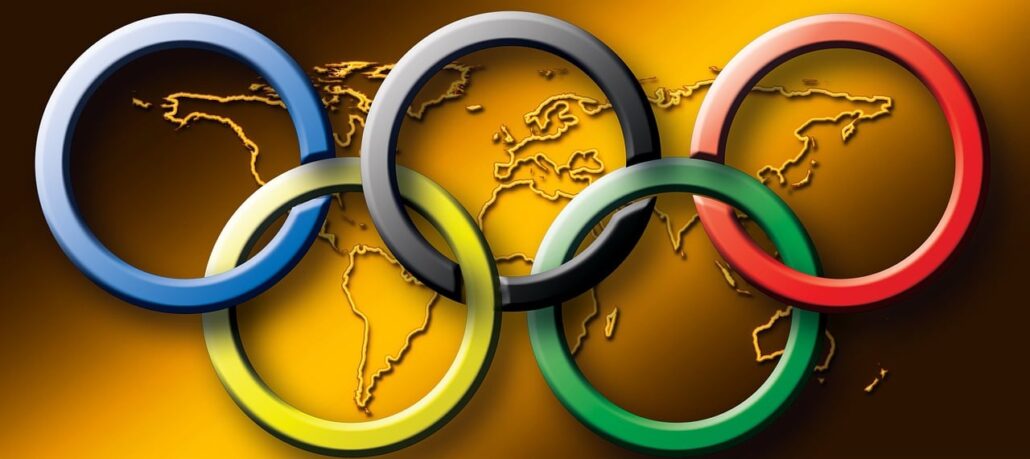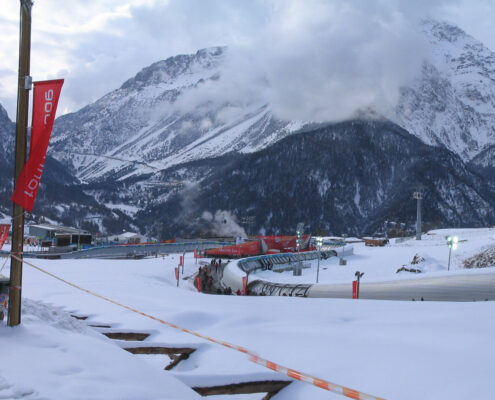 https://greenmarked.it/wp-content/uploads/2024/05/photo_2024-05-23_19-52-17.jpg
853
1280
Pietro Boniciolli
https://greenmarked.it/wp-content/uploads/2022/01/LOGO-GREENMARKED-SITO-600x600.png
Pietro Boniciolli2024-05-23 19:55:582024-05-23 20:22:14En Route To Sustainability
https://greenmarked.it/wp-content/uploads/2024/05/photo_2024-05-23_19-52-17.jpg
853
1280
Pietro Boniciolli
https://greenmarked.it/wp-content/uploads/2022/01/LOGO-GREENMARKED-SITO-600x600.png
Pietro Boniciolli2024-05-23 19:55:582024-05-23 20:22:14En Route To SustainabilityApril 15, 2024

The International Olympic Committee (IOC) has long focused on the need to promote environmental sustainability within the Olympic movement. One of the main ways it is pursuing this goal is through the Olympic Forest project, an initiative aimed at offsetting the carbon emissions generated by the Olympic Games through the reforestation of degraded areas worldwide [1].
The concept is simple but can and will have a powerful impact. In fact, for every ton of carbon emitted during the Olympic Games (both winter and summer), a certain number of trees are planted [1]. These not only absorb considerable amounts of carbon from the atmosphere but also contribute to the creation of habitats for wildlife, soil conservation and the protection of water resources.
“Tackling climate change and preserving the environment are among everyone’s main responsibilities”, said Marie Sallois, IOC Director for Corporate and Sustainable Development. “As the Olympic movement, we want to contribute to the fight against climate change in our area of influence” [2]. Olympic forest network projects will not be limited to planting new trees, but may also include protecting or restoring existing forests, wildlife corridors, watersheds, and coastal ecosystems.
The aim of the Olympic Forest project is not only to offset carbon emissions but also to create a positive environmental legacy that will last over time [1]. Areas designated for reforestation are often selected based on the need to restore and protect natural ecosystems that have been compromised by deforestation, fire or other human activities.
In 2021, an initiative was funded to grow 590,000 native trees in some 90 villages in Mali and Senegal, the site of the Dakar 2026 Youth Olympic Games [1]. Olympic Forest aims to reach the people directly and improve their livelihoods and resilience. The project aims to create social, economic, and environmental benefits for communities in Mali and Senegal that are heavily affected by global warming despite being among the last places for climate-altering emissions. Increasing droughts and floods in these countries are leading to a constant degradation of land and food sources, putting enormous pressure on the populations of these nations.
To avoid problems encountered in some tree planting initiatives that have fallen victim to poor planning, choosing tree species that can withstand and grow even in places with extreme climates (such as the Sahel areas) is particularly important. This is why the IOC has chosen Tree Aid, a non-governmental organization (NGO), as a partner, which has implemented a rigorous tree selection process that takes into account both the economic needs of the community and environmental factors. This selection uses a bottom-up participatory approach that involves local community members in identifying suitable land, selecting tree species and agreeing on how the land will be managed to benefit the community and the environment [1].
However, this is only one element of the Olympic Committee’s overall commitment to environmental sustainability. For years now, a series of guidelines and criteria have been adopted to guide Olympic Games organizers in integrating sustainability into all aspects of event planning and execution in line with the directives of the Paris Agreement (2015) and the reduction of the organization’s footprint [3].

Fig. 1: Forest. Free-source picture by Brian Garrity downloaded from Pixabay.
Key sustainability guidelines include [3]:
- Reducing Greenhouse Gas Emissions: Games organizers are encouraged to take measures to minimize greenhouse gas emissions during the preparation and conduct of events.
- Responsible Resource Management: This includes the efficient use of water, energy and other resources during the Games, as well as the reduction of waste through recycling and other sustainable practices.
- Promotion of Sustainable Mobility: Organizers are encouraged to promote public transport, cycling and other forms of low-emission transport during the Games.
- Promotion of Biodiversity and Habitat Conservation: The IOC encourages the conservation and restoration of natural habitats and the protection of biodiversity in Olympic host areas.
- Local Community Involvement: Organizers are encouraged to actively involve local communities in decisions and initiatives related to the Olympic Games, ensuring that the event has a positive social and economic impact.
The Olympic Forest project and the IOC Sustainability Guidelines represent a concrete commitment to reduce the environmental impact of the Olympic Games and promote sustainable practices globally. Through these efforts, the organizers of the Games are demonstrating their commitment to a more sustainable future with lower human impacts in the world of sport.
References
Click here to expand the references[1] Olympic Forest. (n.d.). https://olympics.com/ioc/olympic-forest
[2] Olympic Movement steps up climate action, announces network of Olympic Forests. (2022, September 9). Olympics.com. https://olympics.com/ioc/news/olympic-movement-steps-up-climate-action-announces-network-of-olympic-forests
[3] The IOC’s climate commitment. (n.d.). https://olympics.com/ioc/sustainability/climate





